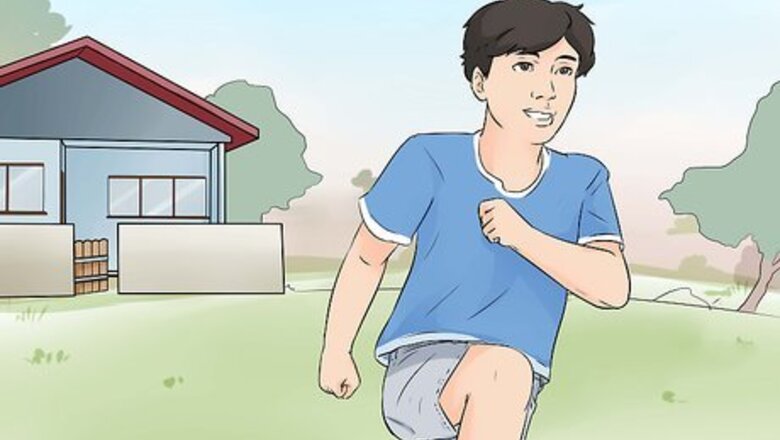
views
Building Muscles Safely
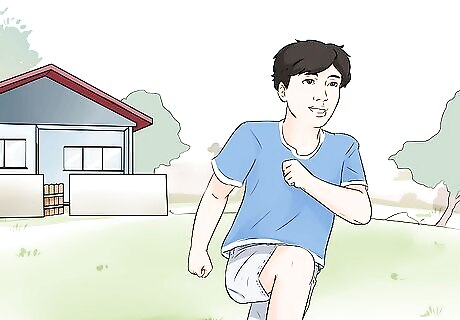
Go outside and play. Running, biking, swimming, playing sports, and walking around the woods all build muscles naturally, and this is often the safest, most fun way for kids to build muscles. Grab a group of friends and play a game of basketball, start a scavenger hunt, jump in the pool, and wrestle in the backyard – just like many adults “cross-train” to build muscle with different activities, kids can secretly build muscles while playing.
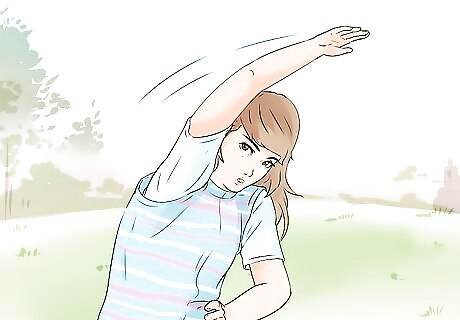
Warm-up before exercising. Just because kids are flexible and full of energy doesn’t mean they can skip the warm-up. Do 5-10 minutes of light aerobic activity, like walking, jogging, or jumping rope, before working out to get your muscles loose and your blood flowing.
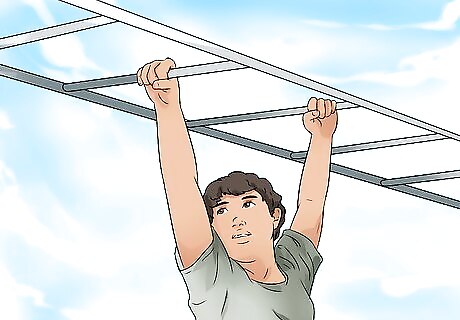
Use the weight of your body to build muscle anywhere. Kids should not just take an adult’s workout plan and scale it down. Not only can this be dangerous, kids have an energy level and natural flexibility that allows them to do a variety of exercises without needed weights. Perhaps more importantly, these exercises are easily turned into games or small competitions, making them much more fun to get through then a trip to the gym. Traverse monkey bars to do modified "pull-ups," or offer to push your friends on the swings to build arm muscle. Hops, skips, and lunges all use your body weight to train your leg muscles. Climbing, whether at a rock wall on the playground, is a great workout for your arm and leg muscles.
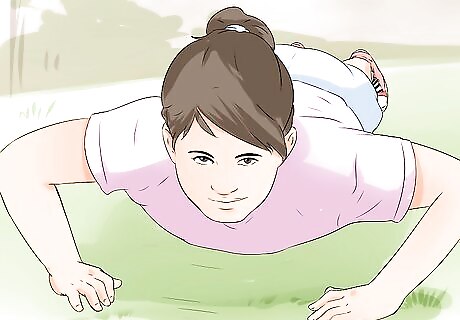
Do push-ups. One of the best exercises for upper body muscles is still one of the simplest. Lie on the ground with your hands and toes touching the floor. Push your entire body up with both hands until your elbows are barely bent, then lower yourself slowly down towards the ground. When you are about 6 inches from the floor, push up again and repeat. Try to get 10 in a row, then rest for 1-2 minutes and try again. Keep your butt down, even with your shoulders. Keep your back straight. Your hands should be shoulder-width apart. However, the further apart they get the more you work out your chest muscles. The closer together your hands are the more you’ll work your arm muscles.

Do sit-ups with a ball and a friend. Sit across your friend with your knees bent and your toes facing each other. One of you should have a ball in your hands. At the same time, bend up from your stomach so that you are looking each other in the eyes and pass the ball. Only your feet and butt should still be touching the ground. Keep doing sit-ups and passing the ball until one of you is too tired to continue. Keep your feet on the ground the entire time, and try to keep your shoulders lined up with your partner's. Focus on using the muscles around your stomach, your abs, to pull you up each time.
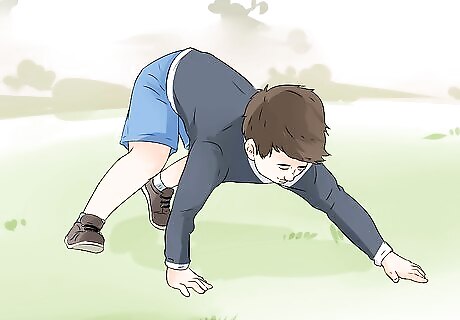
Organize “crazy races” to build different muscles. There are tons of fun variations to a normal race that activate certain muscles and encourage kids to exercise without knowing it. Try making a relay race that switches between the following exercises to encourage great upper body strength. Bear crawl: With your hands and feet on the ground, stick your butt high in the air and run forward on all fours. You’ll be surprised how quickly you get tired – many football and rugby teams still do this for strength conditioning. Crab walk: Sit on the floor with your knees bent and your feet and hands on the ground. Lift your butt and walk forward, backward, or side to side to exercise your arms, abs, and thighs. Burpee: Jump forward with both feet. When you land, get down and do one push-up. Then get up quickly and leap forward again. Moon lunges: While they look slow, these are great hip and leg building exercises. Take the biggest step forward you can with your right foot, then lower your left knee and your butt slowly towards the ground. Stand up and repeat with your left leg.
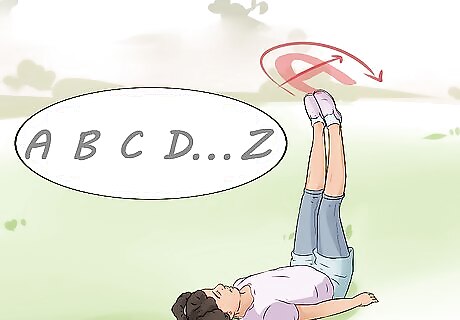
Spell out your alphabet with your legs. This helps to work your core and leg muscles. This exercise isn’t for the faint of heart, but it is a fun way to work some thinking and competition into your exercises. Lay on your back. Lift both legs together and point your toes down so that they form a long, straight pencil. From here, spell out the alphabet with your legs. How far can you get? It is often easiest to keep your hands underneath your butt for balance. Make a “Work-out Spelling Bee” by challenging friends to spell words with your legs. Not only does spelling count, but you have to get through the word as well.
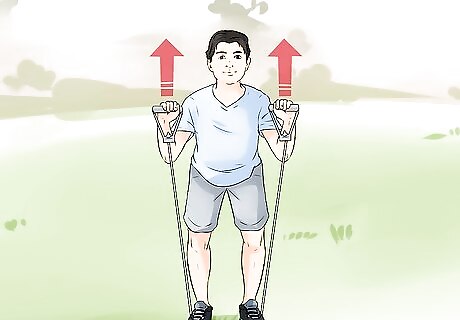
Use resistance bands for “light” weight training. Resistance bands are a long, stretchy, exercise tools that allow you to safely simulate weightlifting. Imagine them as large rubber bands—as you pull on them, they resist you and want to snap back together, making them harder and harder to pull on. Some exercises to try include: Stand on one end of the band with your right foot and hold the other in your right hand. Keep your elbow in the same place and pull the band up towards your chest with your hand. Do ten, then switch hands. Hold an end of the band in each hand. Stand on the center of the band with both feet, legs shoulder-width apart. With your arms wide apart (like you were surrendering), push the ends of the band up to the sky. Keep your knees slightly bent. Hold an end of the band in your right hand and step on the other end with your left foot. Keeping your back straight, twist at the hips towards you left foot as if you were trying to touch your toes with your right hand. Twist back out and pull the band high up to the right side of your body. Think of doing a classic “disco dance,” or pulling the cord to start a lawnmower.
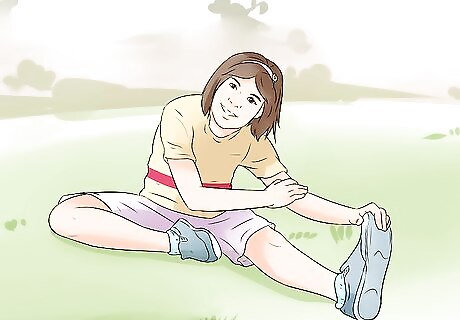
Stretch when you are done. Cooling down helps you muscles relax, making them more effective the next time you need them. Do some light stretching when you are finished to feel great the next day. Make sure you take time to rest. Your body needs time recover after a workout, so don’t exercise the same muscles two days in a row.
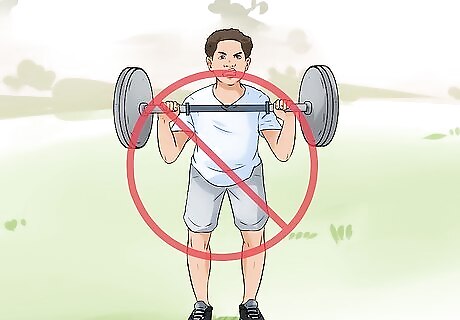
Know that you should not lift weights until after puberty. Trying to lift difficult weights and “get huge” is not only impossible for young kids, it is unhealthy. Your muscles, tendons (which attach muscles to bones) and ligaments (which attach bones to other bones) are not fully developed, and could tear under the stress. Be patient and wait on weights until you are a teenager. Small weights, ranging from 1-5lbs, can be safely substituted for resistance bands in younger children. Body weight exercises are much better for younger kids. You can still build muscle without injuring yourself.
Beginning Weightlifting
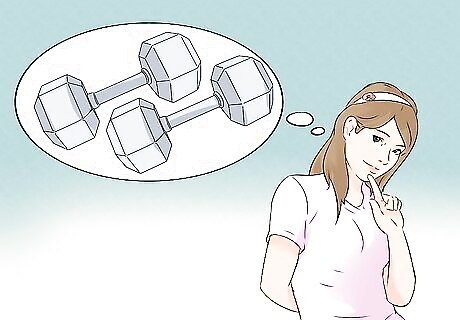
Start lifting after you’ve hit puberty to build muscle. Teenagers can start to build muscle in the gym after puberty. In fact, teenagers may be able to build muscle faster than adults. The hormones that cause a teenager to grow rapidly in puberty increase your metabolism and increase muscle growth. Most children can start lifting weights at age 12-14, but the signs that someone is going through puberty include: Beginning body odor Acne Beginning to grow body hair (males) Shoulders widening, chest growing (males) Begin to develop breasts (females) EXPERT TIP Laila Ajani Laila Ajani Fitness Trainer Laila Ajani is a Fitness Trainer and founder of Push Personal Fitness, a personal training organization based in the San Francisco Bay Area. With over 10 years as a trainer and exercise specialist, Laila has expertise in competitive athletics (gymnastics, powerlifting, and tennis), personal training, distance running, and Olympic lifting. Laila is certified by the National Strength & Conditioning Association (NSCA), USA Powerlifting (USAPL), and she is a Corrective Exercise Specialist (CES). Laila Ajani Laila Ajani Fitness Trainer Children should not focus excessively on muscle building before they reach puberty. When exercising with kids, parents should not worry about doing a set amount of exercise or reps in a workout session. Instead, they should focus on introducing fun activities that make kids excited about fitness and about starting this healthy habit at an early age.
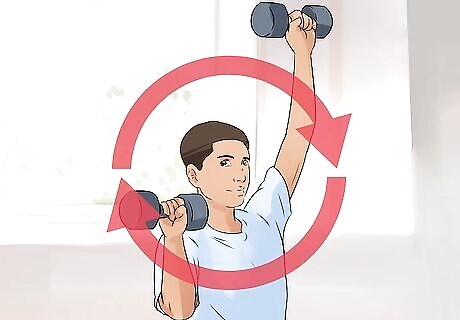
Focus on light weights with lots of reps, not lifting a ton of weights a few times. The safest, most effective way for teens to gain muscles is to have proper form and safe lifting habits. As you first start out, you might be able to bench press a lot of weights once or twice, but your form will suffer as you try to force the weight up. Try to do 8-12 reps of something with a weight that challenges you but feels comfortable. A “rep” is when you do an exercise once. Aim for 8-12 reps A “set” is a collection of reps. After one set, rest for 1-2 minutes before continuing. Aim for 3-5 sets of each exercise.
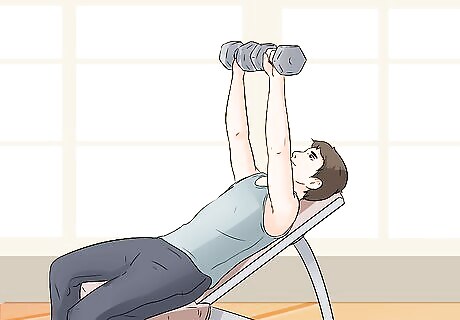
Build a program around the basics. While every magazine rack in the country touts “the best new workouts to gain muscle,” the classic exercises are still some of the best. Most of these are “compound lifts,” meaning they work out multiple muscles at once for quick results. Start your lifting program by learning the following exercises before moving on to more complex, sport-specific lifts: Bench Press Shoulder Press Squats Deadlifts Rows
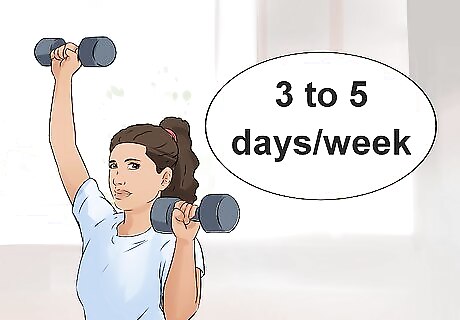
Aim to work out 3-5 days a week for no more than an hour each day. Remember, your body is still growing and will react negatively to working out too often. Don’t push yourself thinking you will get better results – you may only hurt yourself and set your training back. Shorter sessions done frequently will help maintain proper form and keep your muscles healthy. Work out on non-consecutive days so that you get a rest in between each session. Hour-long workouts allow you to focus on your technique without getting too tired to pay attention to form.
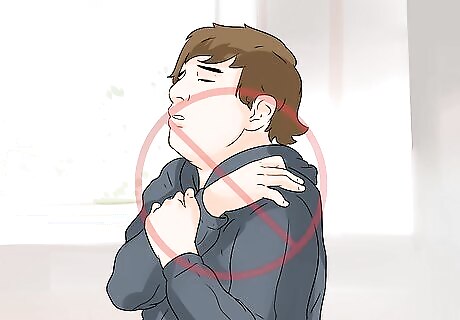
Make sure your technique is perfect. This is the best thing you can do to grow muscle quickly and safely. Do not try to teach yourself how to lift, you need a coach, parent, or personal trainer to spot your mistakes and show you how to fix them. Some things to focus on include: Keep your back straight. Your lower back should never bend while lifting weights. To avoid it, focus on keeping your chest puffed slightly up and your shoulder blades back. Never fully extend your joints. Instead, push the lift until your joint is just slightly bent before returning to rest position. If you feel pain, stop. "No pain, no gain" is a myth -- while an exercise should be difficult, sharp pain in your muscles or joints means you are doing something incorrectly.
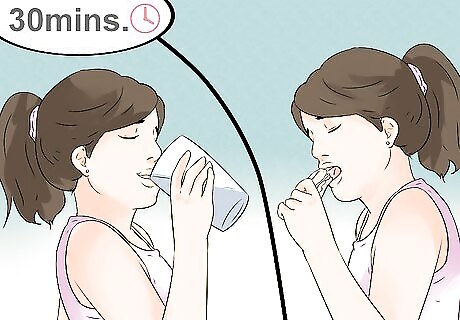
Eat and drink water within 30 minutes of exercising to fuel muscle growth. Your muscles need protein and energy to grow strong, so make sure you get the calories you need to build muscle. While you don’t need to overload on protein, try to get some in your system shortly after a workout. Make sure you drink 2-3 glasses of water after working out to re-hydrate as well. Good foods for muscular gain after a workout include the following: Turkey or chicken sandwich Trail mix Peanut butter and jelly Protein, granola, or fruit & nut bars.
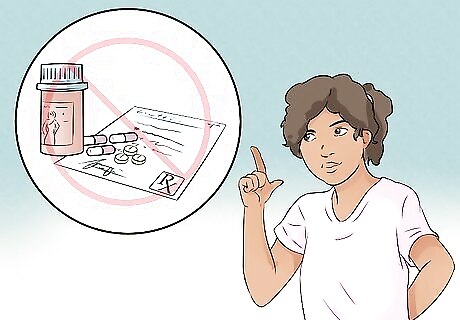
Know that supplements are not a substitute for good nutrition. Supplements claiming that they can “build muscle fast” or help you lose weight in weeks are generally not safe, especially for teenagers with developing bodies. You should focus on eating a healthy, balanced diet and refrain from “quick fixes” that may or may not work. A good, balanced diet mixes in protein (chicken, fish, eggs), complex carbs (oatmeal, sweet potatoes, beans, whole wheat) and fruits and vegetables every day. A good diet will fuel your body and help you make the most of your workouts. Never use steroids to supplement your workout, as these "methods" of gaining muscle can create health problems for years to come.

See a doctor before starting any exercise program. Ask your doctor about starting an exercise program at your yearly check-up. Make sure there are no medical concerns you should know about and talk to them about developing a safe exercise program for your body. While you may feel ready to pump some iron, your doctor will have specific advice to help you get the most out of your exercises.
Understanding Kids’ Muscles
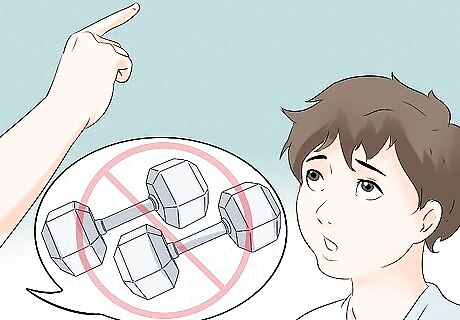
Remember that kids are not likely to grow muscles before puberty. The hormones needed to grow big, bulky muscles come with puberty, so do not push a child to lift weights or start training plans when they cannot even reap the rewards. Kids will start to build muscle naturally as teenagers, but kids should be focused less on growing muscles and more on being healthy.
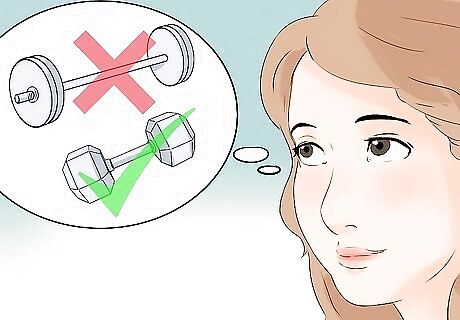
Focus your energy on strength training, not weightlifting. Weightlifting, body building, and power lifting can all be very dangerous to a child’s still-developing muscles. Strength training, however, is focused on proper technique and safety instead of lifting the biggest piece of metal you can. Weightlifting as a child can damage a kid’s growth plates, which are pieces of cartilage still turning into bone, injuring a child for life. Make a distinction between increasing muscle strength and “bulking up.” Talk to them about the benefits of having lean muscles such as a healthy weight, improved performance in sports, and higher self-esteem. Let them know that it is impossible to "bulk up" a lot of muscle before puberty.

Know that a child can start strength training around age 7 or 8. If a child can follow directions well and expresses interest in getting stronger, you can safely begin a light workout plan as early as 7 years old. If a child is ready to play organized sports, they are generally ready to start a strength program. EXPERT TIP Laila Ajani Laila Ajani Fitness Trainer Laila Ajani is a Fitness Trainer and founder of Push Personal Fitness, a personal training organization based in the San Francisco Bay Area. With over 10 years as a trainer and exercise specialist, Laila has expertise in competitive athletics (gymnastics, powerlifting, and tennis), personal training, distance running, and Olympic lifting. Laila is certified by the National Strength & Conditioning Association (NSCA), USA Powerlifting (USAPL), and she is a Corrective Exercise Specialist (CES). Laila Ajani Laila Ajani Fitness Trainer The youngest age a kid should visit a gym is seven years old. Even so, they must use extremely lightweight equipment. Prepubescent children aged 12 and under should stick to bodyweight exercises. Once your kids pass puberty, you can slowly start introducing weights into their exercise routines with proper guidance and instructions.
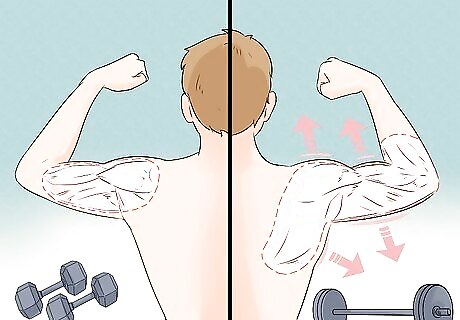
Focus your energy on strength training, not weightlifting. Weightlifting, body building, and power lifting can all be very dangerous to a child’s still-developing muscles. Strength training, however, is focused on proper technique and safety instead of lifting the biggest piece of metal you can. Weightlifting as a child can damage a kid’s growth plates, which are pieces of cartilage still turning into bone, injuring a child for life. Make a distinction between increasing muscle strength and “bulking up” with your child by talking to them about the benefits of having lean, strong muscles, such as a healthy weight, improved performance in sports, and higher self-esteem.
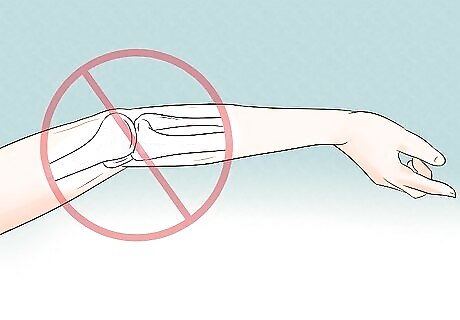
Prioritize proper technique over big muscles. Since most children cannot actually build muscle, you should work on the proper exercise techniques to prevent injury, learn good mechanics, and set a good foundation for later workouts. Some things to look out for include: Keeping your back (spine) aligned. Your lower back should never bend forward or backward to make a stretch easier. Focus on keeping your chest up and shoulder blades back so your back is flat. Never “hyperextend” a joint. Hyperextension is when you bend a joint slightly the opposite direction as it is supposed to, like straightening your knees so much that your legs curve backward. Work on healthy running form. Good runners keep their backs straight, land in the middle of their feet (not on their heels) and take medium sized, quick strides instead of long steps.
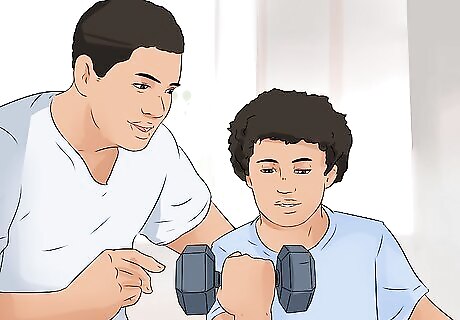
Supervise a child as they learn strength training. Kids are trying to learn complex motions at the same time as they build muscles, and this is difficult when they are first starting out. You need to watch kids and help them fix posture, avoid injuries, and work out effectively to avoid injuries.


















Comments
0 comment